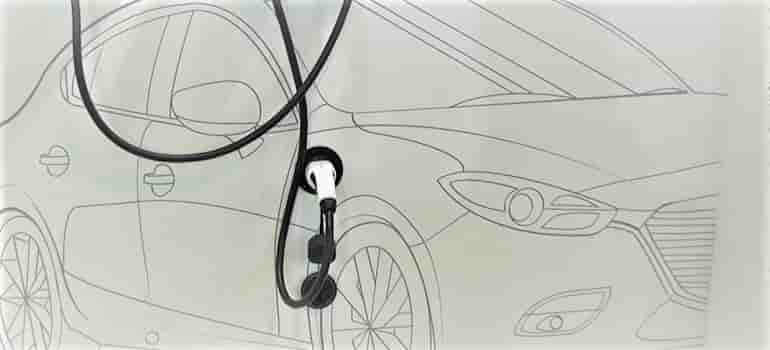
India Energy Storage Alliance (IESA) in its 2nd annual report “India Electric Vehicle Market Overview Report 2020-2027” for the India Market forecasts the EV market to grow at CAGR of 44% between 2020-2027.
According to the report, EV sales in India stood at 3,80,000 in 2019-20, and the EV battery market stood at 5.4GWh during the year. In the base case scenario, the EV market is expected to grow at CAGR of 44% between 2020-2027 is expected to hit 6.34-million-unit annual sales by 2027.
The annual battery demand is forecasted to grow at 32% to hit 50GWh by 2027, of this, 40+GWh will be on lithium-ion batteries. The estimated battery market potential is $580 million in 2019 and is forecasted to grow to $14.9 billion by 2027.
The electric two-wheeler (e-2W) market took up the highest share in 2019-20. Currently, low- and medium-speed e-2W (up to 40 kmph) with conventional lead-acid batteries are dominating the market as they are already at par in terms of upfront cost with Internal Combustion Engine (ICE) vehicles. Secondly, high-speed segment with Li-ion batteries is also gaining momentum slowly. With more companies getting FAME-II certification in 2020, sale of high-speed e2Ws is also expected to increase rapidly in next two years.
Going forward, for the exponential growth of this segment, the market is demanding for quality two wheelers, which can compete with ICE vehicles in terms of both cost and performance. Further, with continuous drop in the price of Li-ion batteries, power electronics, and advancement in EV technologies, the high-speed segment is also expected to hit the parity by 2024-25 without the subsidy support from the government and that could be considered as a tipping point for the exponential growth of this segment in the country. In terms of battery technology for E-2Ws, then as per industry inputs, lead-acid technology will be completely out of the market in next five years.
The electric bus market in India is expected to be driven with subsidy support from the Central Government in phase-1 (2023-24) due to high upfront cost. Going forward, expansion is likely based on viability and access to financing. So far, FAME-I and FAME-II schemes have been the key drivers of e-bus market in India. In 2019, Department of Heavy Industry (DHI) sanctioned 5595 e-buses to various STU’s under FAME-II scheme. Out of which, procurement process of 2500 buses have already been completed and approved for subsidy by DHI and further contracting is underway.
The low-speed electric three- wheeler (e-3W) market in India has grown very rapidly in different parts of the country since 2013. As per International Centre for Automotive Technology (ICAT), there are 600+ registered players available in the segment. Apart from the registered OEMs, the grey e-rickshaw market has also evolved rapidly in different parts of the country particularly in West Bengal, Bihar, & Delhi NCR. As per industry estimation, 60% of the e-rickshaws today on road come from the unorganized suppliers. The growth of the grey e-rickshaw market has slowed down due to government’s push for ICAT certified models from late 2018 and the share of organized players is increasing slowly.
Going forward, industry believes that there is a huge potential for the growth of e-rickshaw market in the upcoming years as many new markets such as Raipur, Indore, Bhopal, Orissa etc. have opened last year. Moreover, the South and North East markets are also expected to open in the upcoming years. In terms of battery technology, lead-acid continues to dominate the market due to strong after sales service. However, OEMs have started shifting towards Li-ion batteries. As per ICAT, 80% -90% of the newer models tested and certified are based on Li-ion batteries.
The high-speed e-3W (L5) market is currently at a very nascent stage and has opened mainly at the B2B or in cargo segment due to requirement of performance vehicles. Low-cost financing is a key constraint hindering the growth of this segment. Going forward, industry believes that the market will grow very rapidly in the upcoming years as many state governments are planning to convert the existing fleet of autos into electric under their EV policies. Apart from state governments, e-commerce companies are looking to increase their fleet size and have already announced their targets. Secondly, as per industry, battery swapping option could be a game changer for this segment and has a potential to disrupt the market.
The report covers the present scenario and forecast of electric vehicle (EV), EV batteries and the public charging infrastructure market in the country. Besides, it covers updated revenue and unit sale details by various EV segments, charging infrastructure types, EV battery potential and the present stage of EV components market in India. There is a detailed chapter on Central and State-level EV policy analysis and offers a competitive analysis of EVs and EV battery suppliers.
The report provides an insight into the EV battery market, its sales figures by EV segments. Battery capacity (GWh) and revenue (INR Cr) forecast till 2027. Besides, EV components such as – motors, power electronics and battery management systems and their market are also covered.
Climate Samurai has small but strong editorial team that brings you uninfluenced and curated news that you can trust. To support truly independent journalism, please consider taking a subscription which is free like our thought.
